If you want to bring your culinary skills to the next level, perhaps you should rethink the most essential ingredient in cooking. Discover what salt do chefs use to season their food so you can reevaluate and update your condiments rack and start balancing the flavors like a pro.
Salt. It is one of the most popular and essential seasonings that any chef has at his or her disposal. It is used for a multitude of different things, not just to flavor your food.
Salt is essential when curing meat, enhancing the flavor of your dish, intensifying aromas, balancing flavors, changing the texture of your food, being used as a preservative, and even being useful when cleaning pots and pans after the cooking has been done.
There are many different types of cooking salt, a lot more than many of us realize. Each of them has its own distinct taste and texture, and many chefs like to use them in a specific way.
Here are 10 popular salts that most chefs use in one capacity or another and why you also may want to consider having some, if not all of them, in your kitchen.
10. Iodized Salt
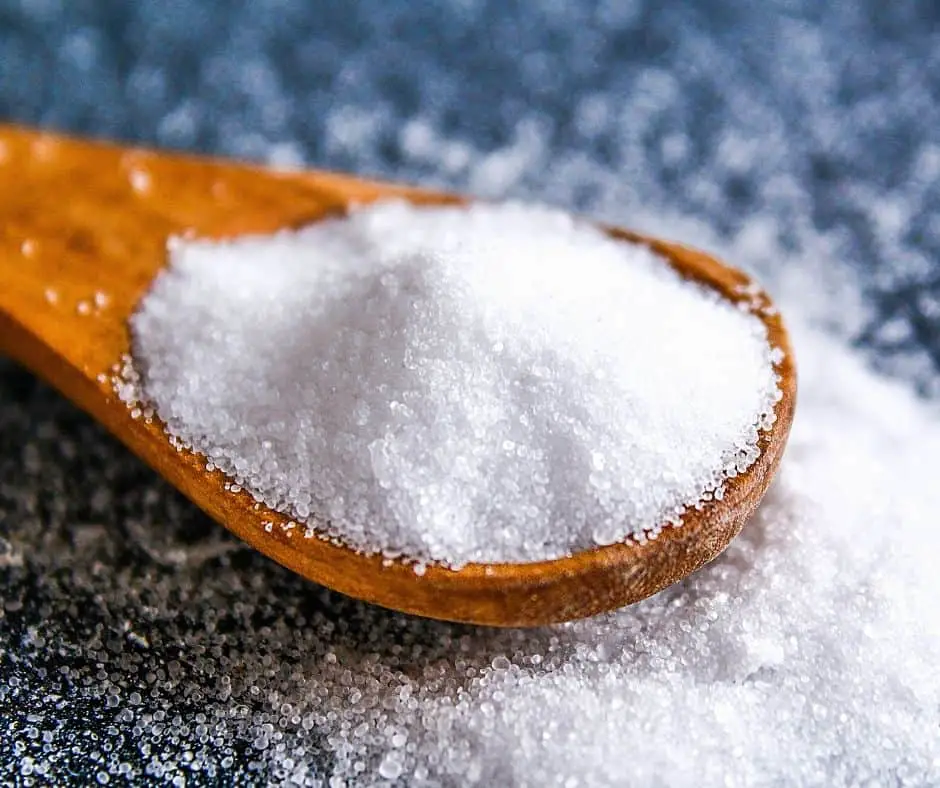
I am starting this list with the iodized salt because we have all tasted it at some point and probably even have it in our kitchens at this very moment.
This common table salt is widely used by home cooks and also in many restaurant kitchens throughout the world, as the majority of table salt sold in supermarkets is iodized. It is incredibly cheap and easily accessible.
This salt is found in and harvested in various underground salt deposits. Once brought back to the surface, it is ground very finely, with all of the impurities removed. As the name suggests, iodine has been added to combat iodine deficiency.
However, Iodized salt is a no-go for many professional chefs – mainly because of its slight chemical aftertaste as well as its texture. Also, the added iodine actually makes it much saltier.
Michael Latour, who is a chef and restaurant owner, says, “It’s so concentrated and intense. Iodized salt is good for your sidewalk, for melting snow. Not for ingesting.”
9. Kosher Salt

Aside from iodized salt, kosher salt is the most popular salt in the United States. It is iodine-free, known for its craggy crystal texture, and has a ton of excellent qualities.
Praised by professional chefs, home cooks, and foodies, it is perfect for everyday use, bringing out delicate flavor in your dishes.
Its coarse texture makes it perfect for sprinkling on top of meat and other food, releasing a burst of great flavor and making it easier to prevent over-salting food.
Also, it is known for dissolving very quickly, so it can really do everything from salting pasta water to enhancing mashed potatoes.
You’ll find this salt in plenty of famous chef’s kitchens, including Wolfgang Puck and Gordon Ramsay.
“I would say that I mostly use Kosher Salt for seasoning my water and flour. I love sea salt, too. I think both are just fine, as long as it’s not iodized salt.”
Wolfgang Puck
8. Sea Salt
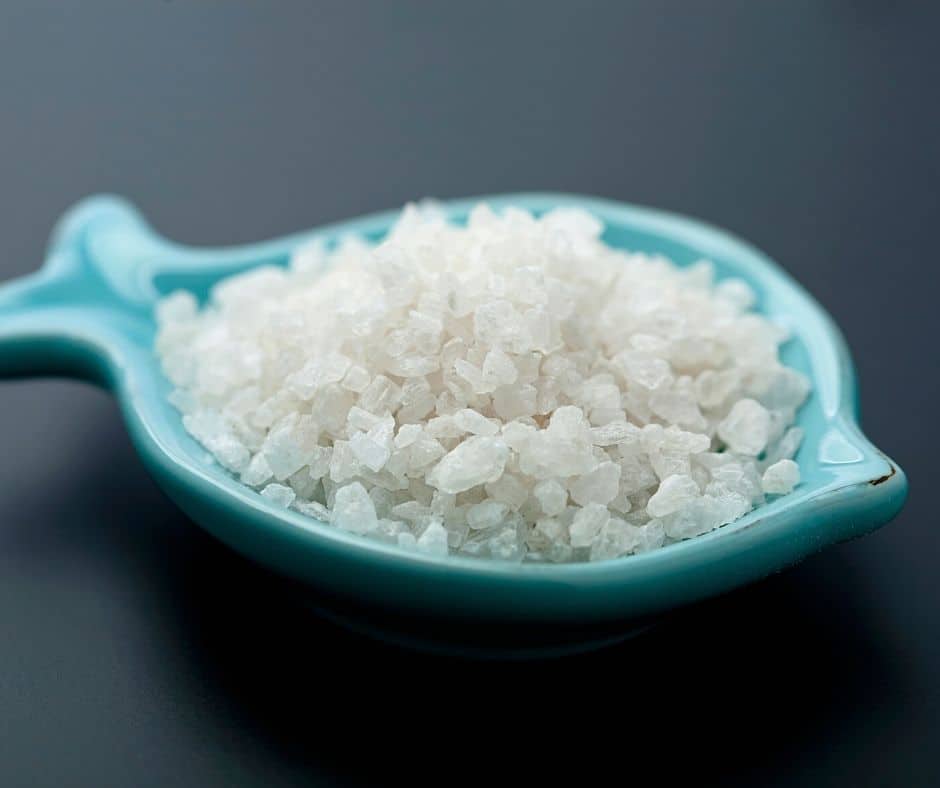
For those really looking for a unique and complex flavor profile, you should check out sea salt. Like most salts, it is available in a granular form with large crystals or finely ground into small meshed granules.
This type of salt is exactly what it sounds like. It is what remains after seawater has evaporated, leaving behind the salt.
Sea salt is such a unique salt to use because it is unrefined, and depending on the water source, it can come in different colors and a variety of coarseness levels.
Because of the natural process of harvesting, sea salt can actually contain many other minerals such as zinc and potassium. This is where the flavor profiles can differ quite a bit from more typical salts like kosher or iodized.
Sea salt is excellent for seasoning most foods and recipes; simply sprinkle it on top of foods to give a big burst of flavor.
However, if you’re looking to really show off your cooking skills, try sprinkling sea salt in such recipes as ratatouille, smoked salmon, baked sweet potatoes, or even chocolate fudge.
7. Himalayan Pink Salt
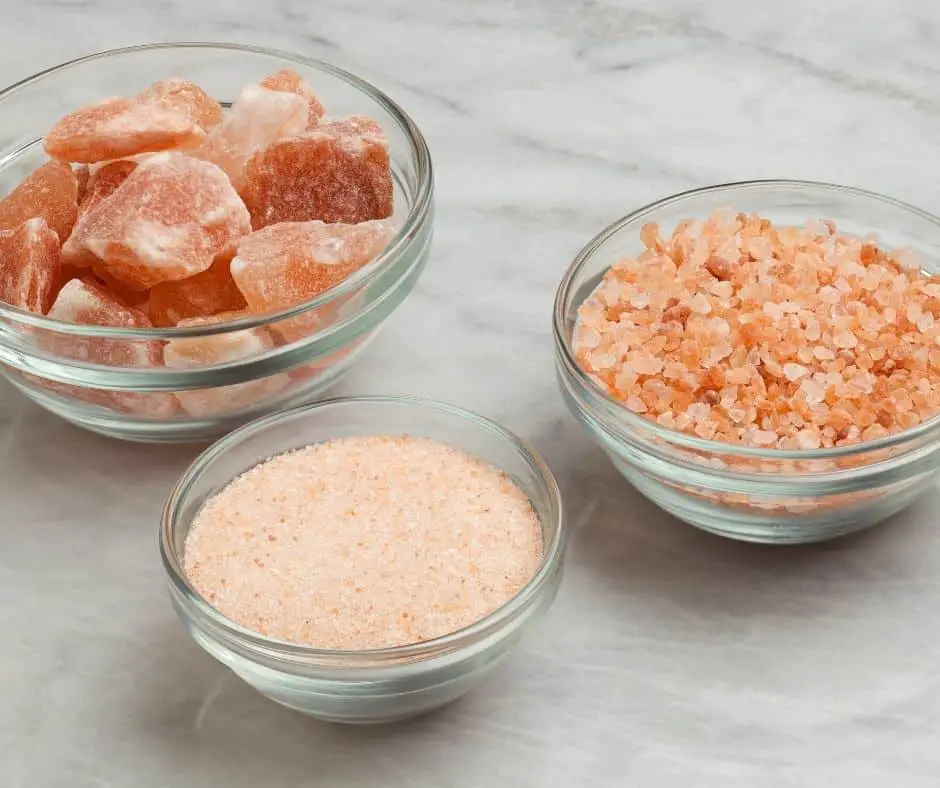
If you’re looking for something to add a little character to your kitchen while also balancing the flavors when cooking, then Himalayan pink salt is what you need to go with.
It can come in large blocks or crystals all the way to fine grind, which is easy to use in a regular saltshaker.
Out of any salts that you can choose from, this is the purest form of salt in the world.
Himalayan salt is a pink-colored rock salt that is extracted from the salt mine in the Himalayas.
Read Also: How To Use Himalayan Pink Salt To Make Natural Electrolyte Powder For Energy And Weight Loss.
Health experts have touted Himalayan pink salt for its fantastic health benefits as it contains the 84 natural minerals and elements found in the human body.
Because of its great nutritional profile, easy dissolvability, and mellow, earthy, and balanced taste, Himalayan pink salt is many chefs’ favorite for adding pleasing complexity to their recipes.
Chef David Burke of Iron Chef America has discussed his love for using the pink Himalayan salt, not only for its fantastic color but for its versatility.
“Today, we are doing some demonstrations on the benefits of using Pink Himalayan Sea Salt. The beauty of it, in general, is using it as an architectural piece, a serving piece, a cooking piece, and for the preserving piece of salt.”
Here, Chef Burke not only uses salt as a seasoning, but he also uses entire slabs of it to cook on as well as to serve food on.
6. Flake Salt

If you’re a fan of things like wellington, salmon, or even a nice salty pretzel, then you’re definitely going to enjoy flake salt. Chances are, you’ve had it already.
Flake salt has a uniquely thin, flattened, flakey texture that is produced through evaporation or boiling of salt water or mechanical compressing. It is irregularly shaped and has a very low mineral content. However, it packs a punch of flavor.
Many chefs use flake salt because it sticks well to food, dissolves very quickly, and results in a distinctive “pop” sound whenever someone bites into it, so it is used for specific food applications.
It allows a person to get a very quick hit of saltiness without overwhelming and lingering effects. So, this type of salt goes best on anything where you would finish the dish with a sprinkle.
Many chefs like to add it to salads, fish, sautéed vegetables, grilled or air-fried steak, and scrambled eggs. This flaky salt is also great for sweet-salty dynamics, garnishing chocolate brownies, fudge, icing, and especially truffles.
Just sprinkle it on after cooking to get that toothsome crunchy texture.
5. Celtic Salt

Mark Bitterman, an American food writer and salt expert, is the owner of a boutique shop that specializes in artisanal salts like Celtic sea salt, which is often used for baking and presentations. In his experience, he says that the right type of salt can make or break a dish.
Many of these dishes are things like pastries and confections. So pastry chefs, pay close attention and figure out where you can get some of this.
Also known as Sel Gris, this natural sea salt is harvested just off the coast of France. There are some tidal pools where harvesters will go and rake the bottom after the salt crystals sink, and the water is then evaporated by air or sun drying.
Because of this, Celtic salt has a very distinctive mineral and briny taste. The grayish hue comes from the clay lining of the salt beds and is a great touch to all sorts of entrees and desserts, especially salted caramel.
Although this whole crystal salt is popular among bakers, with a crunchy texture, vibrant flavor, and fast dissolvability, it is a great all-purpose seasoning with most of your dishes.
4. Kala Namak

Going back to the Himalayan mountain region, we have another salt called Kala Namak, which is Nepalese for “black salt.” It is also known as Suleman Namak or Kala Loon.
Even though the black color is definitely a fantastic feature of Kala Namak, the process by which it is made is even more incredible. You see, this isn’t a naturally occurring salt but the product of a long process of combining various flavors.
When the Himalayan salt is harvested, it is packed into a jar with charcoal, various herbs, seeds, and bark. Then, it is lit in a furnace and kept there for 24 hours before being taken out, stored, and aged.
By doing this, the Kala Namek turns a reddish-black color and takes on the smell of hard-boiled eggs and sulfur.
Although it may seem quite different, many chefs like to use it in vegan and vegetarian recipes and for dishes that do not use eggs to give the food an egg-like taste.
So, if you are cooking vegan scrambled eggs, chickpea omelet, tofu scramble, cauliflower fried rice, quiche, frittata, or even eggless egg salad, then Himalayan black salt is a great option.
In addition, many chefs use it to enhance the flavors in authentic Indian dishes, combine it with turmeric and ginger or add it to fried foods and sprinkle it over different snacks like fried legumes or peanuts.
3. Black Hawaiian Salt
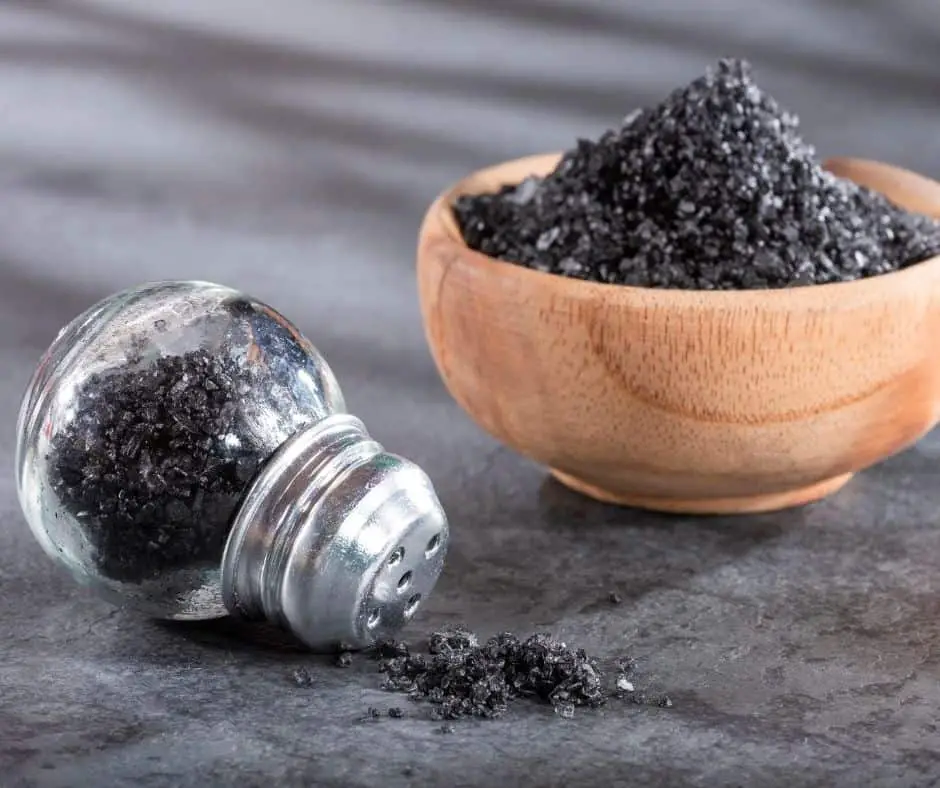
Black Hawaiian salt is another type of black salt that doesn’t quite carry the pungent characteristic of kala namak and is one of the favorite finishing salts among many chefs.
Also known as black lava salt because of the volcanic islands from which it is harvested, black Hawaiian salt is very coarse and crunchy. However, it keeps that great salty flavor that tastes much like Himalayan Pink Salt.
The black color of this salt comes from the addition of activated charcoal, giving it a slightly earthy, robust flavor.
Chefs use it for all sorts of dishes, but mainly for finishing meats such as pork and various types of seafood. You can also use it to finish salads, eggs, or even desserts.
2. Red Hawaiian Salt
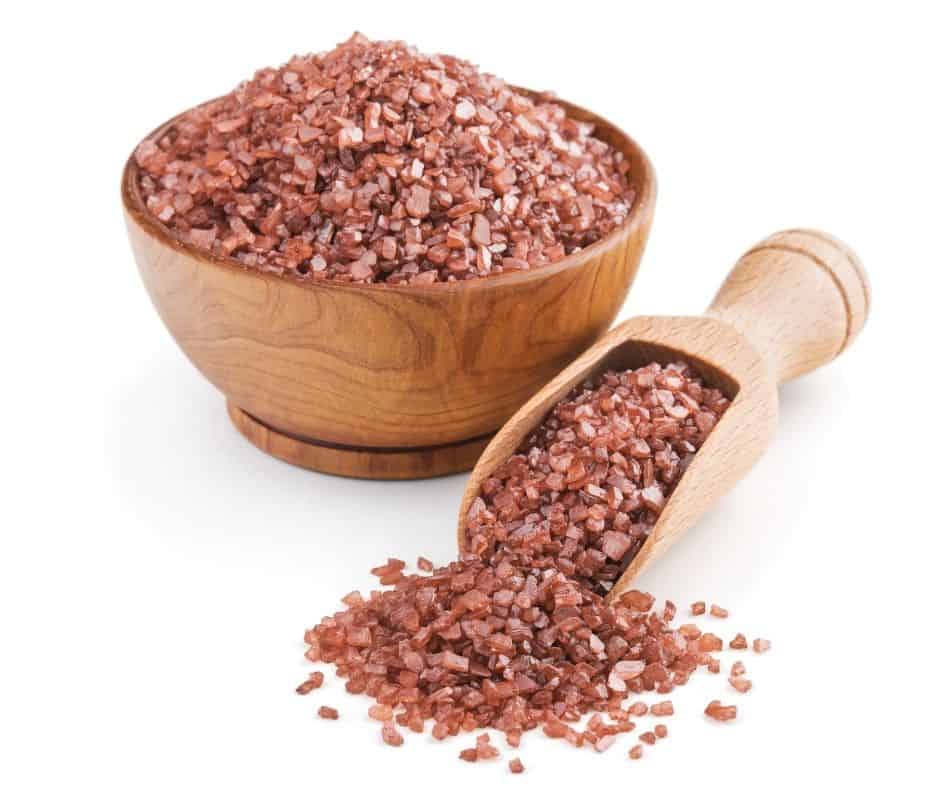
Staying on the volcanic island of Hawaii, we have Red Hawaiian Salt, a unique mineral that dates back hundreds of years.
Also known as alaea salt, this red Hawaiian salt is unrefined and keeps many of its impurities and various other elements like iron-rich red alaea volcanic clay. It is how this salt gets its distinctive reddish hue.
Many chefs use red Hawaiian salt in their kitchen to add a dynamic flavor to seafood and meat or traditional Hawaiian dishes such as poke and pipikaulal.
It also works great when sprinkled on fancy dishes or baked goods before baking.
It has an intensely crunchy texture and smooth and delicate, slightly nutty flavor hint of sweetness. It is not as salty as regular table salt.
But, prior to it being a popular seasoning, the island natives would use it for ceremonial purposes such as cleansing, purification, and various types of blessings.
It is a very respected and very popular type of salt on the Hawaiian islands, showcasing the culture and history of the people.
1. Fleur de Sal
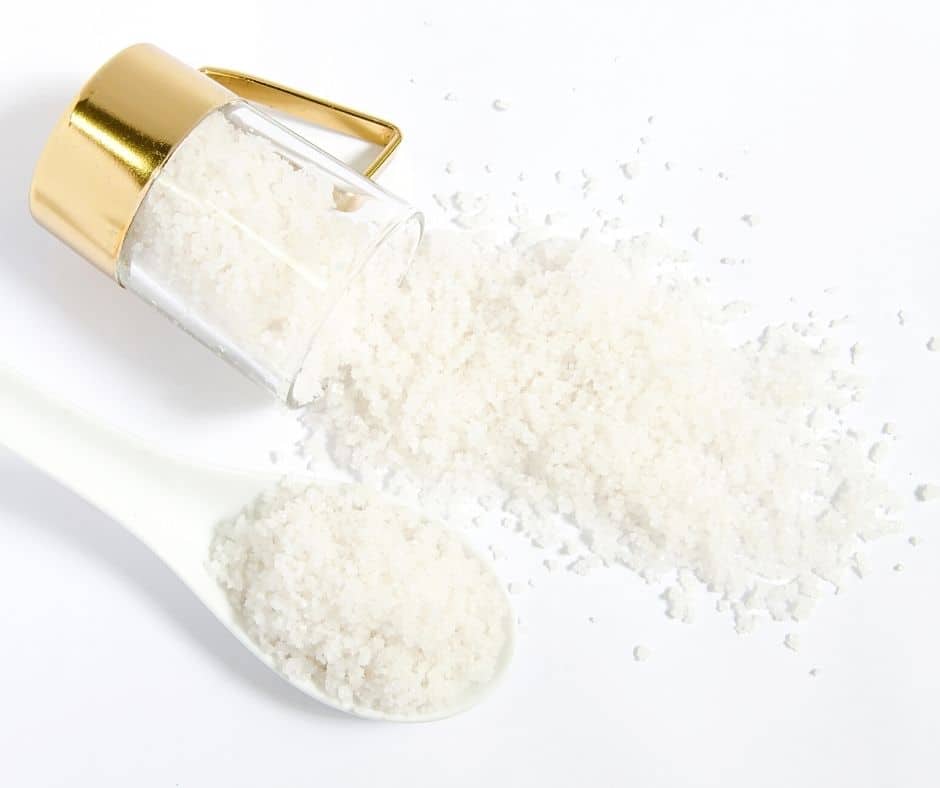
Finishing out our list is the most expensive and coveted salt on the planet, Fleur de Sal.
Literally translated as “flour of salt”, this sea salt is harvested from French tidal pools completely by hand. Harvesters travel out on sunny, dry days when the wind is blowing ever-so-slightly and skim the water’s surface with wooden rates.
It is a very painstaking and delicate process which is why it is so expensive and referred to as “the caviar of salts.”
This bluish-gray hand-harvested gourmet salt is very high in mineral content and retains moisture very well. But, if you can spare the money for it, you will definitely not be disappointed.
It has a delicate flavor, and despite the moist texture, it provides a delicious crunch.
It is favored by professional chefs for its use as a gourmet finishing salt, elevating the flavors of everything from meat and seafood to vegetables and bread. Some chefs even use it as an additive to sweets such as caramel and chocolate brownies, toffees, cookies, and even muffins.
In Conclusion
Salt is an incredible seasoning and very important in the culinary world. So, next time you bite into something, know that your food’s seasoning may have a unique story behind it. Also, don’t be afraid to try them out and experiment with seasoning your dishes. Happy eating friends!


